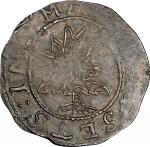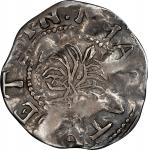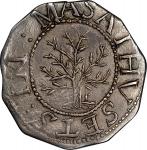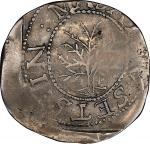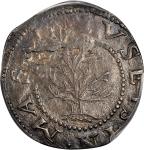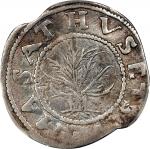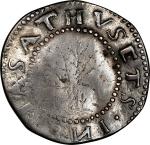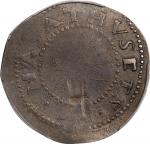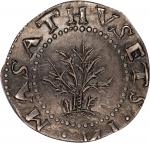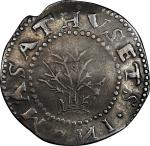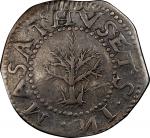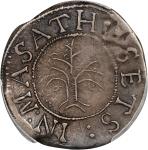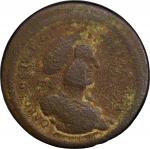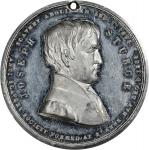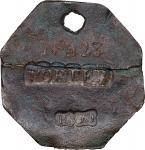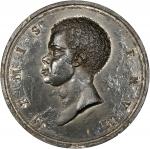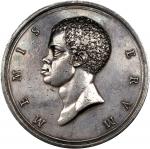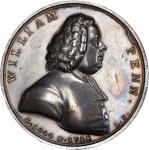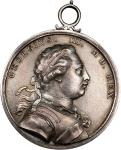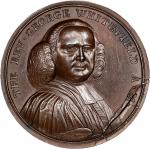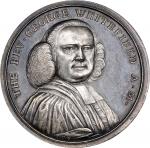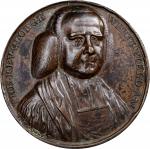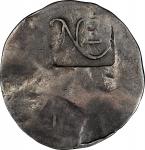Undated (1652) NE Shilling. Noe 2-A, Salmon 2-B, W-60. Rarity-7-. VF-35 (PCGS). 70.5 grains. <strong>Howes 6</strong>. As the first metallic currency struck in the Thirteen American Colonies, the NE coinage is easily one of the most famous - and important - of all colonial issues. Stacks Bowers Galleries is proud to once again present the Cleneay specimen of the Noe 2-A NE shilling at auction, which we last offered in our (Stacks) December Sale of 1979. It is a lovely example of both the type and Noe number that is eagerly awaiting inclusion in another advanced numismatic cabinet.<p>The act passed on May 27, 1652, by the Massachusetts Bay Colony resulted in the first coins struck in British North America - in other words, the territory that would eventually become the United States. The establishment of a mint in the colony was in reaction to a shortage of circulating coinage as well as the problem of debased silver coins in commerce. John Hull was appointed mintmaster with Robert Sanderson, Sr. as his partner. They were the premier silversmiths in the British colonies at the time but lacked knowledge or experience as coiners. As such, the first coins that they produced for Massachusetts were made using the familiar techniques of silversmiths.<p>Since a proper press for striking coins was also still in the future for the colony, the first coins produced by Hull and Sanderson were made using simple device punches similar to those of a silversmiths hallmark. These punches sufficed since the General Court of the Massachusetts Bay Colony mandated that the first coins carry only an NE design on one side, for New England, and an expression of the denomination in Roman numerals on the other. This is the historic, famous and rare NE coinage produced in denominations of shilling, sixpence and threepence. The first examples were produced sometime after the authorizing act became valid on September 1, 1652, although the exact date is unknown. It is also not known how long NE coinage remained in production, but new legislation that required a more complex design for the colonys coinage was issued less than two months later, on October 19. According to traditional numismatic wisdom, the improvement in design was intended to combat the problem of clipping and shaving of the NE coins, practices made too easy by the simple design. Louis E. Jordan, in the reference <em>John Hull, the Mint and the Economics of Massachusetts Coinage</em> (2002), states that Hull and Sanderson acquired the colonys first proper press - a rocker press - in 1654. Some have concluded that NE coinage would have had to continue until then because the succeeding coins of the more complex Willow Tree design would have required the rocker press for proper production. Writing in the outstanding 2010 reference <em>The Silver Coins of Massachusetts</em>, however, Christopher J. Salmon argues conclusively that the Willow Tree coinage was produced using the same techniques as its NE predecessors. We can conclude, therefore, that coinage of NE shillings, sixpence and threepence was confined to a few weeks from early September through late October 1652. Mintages were certainly limited, due to both time and the challenges of any mints first coinage operations, especially one whose mintmaster and assistant were not skilled in their new craft and further burdened by the realities of living and working in 17th century New England.<p>The minting process for the NE shillings began when silver plate or Spanish colonial silver coins were brought to Hull and Sandersons shop for melting and assay adjusting to bring the fineness up the sterling quality. Exactly how the planchets were produced is unknown, but it was probably through hammering or pouring the molten silver into ingot molds and, once cooled, drawing on a bench through cast iron rollers. Christopher J. Salmon continues the process in his work on Massachusetts Bay Colony silver:<p><em>The NE stamp was applied with a punch similar in appearance and style to a silversmiths touchmark or hallmark punch. This was done on the 12:00 position of the silver blank. The flan was then turned over and struck with the denomination punch at the reverse side of the 6:00 position, so selected for symmetry, and more importantly, to avoid marring or entirely obliterating the impression of the NE punch. The punches would probably have been hit sharply with a large hand-held hammer with the cold flan placed on the surface of a large steel anvil embedded in a tree trunk, according to standard silversmith methods of the time.</em><p>The punches that Hull and Sanderson used for the NE shillings wore down quickly, not surprising given their coining methods, and required regular recutting of the design elements to keep them usable. Writing in <em>The Colonial Newsletter</em> in 2010, Jack Howes demonstrated that all three NE shilling obverse punches are actually the same punch that had been significantly recut twice. Despite continual recutting, strikes from the punches were almost always incomplete, although this is also in keeping with silversmith practices of the time, hallmarks on contemporary silverware usually asymmetrical with one side of the mark slightly less defined than the other. Salmon ascribes this to "angulation of the punch during hammering."<p>Numismatic scholars have identified six different varieties of NE shilling, using three different states of the same NE punch and four distinct XII denomination punches. The offered coin is attributed as Noe 2-A, the obverse punch with slender (although impractical) lines resulting in smoothly curved upper right and left serifs on the letter N. The punch of Noe Reverse A is most readily identifiable by a large focal break engaging the upper left portion of the Roman numeral X.<p>Given the limited number of coins presumably struck and a high rate of attrition through commercial use and eventually melting, it is little wonder than the NE shilling as a type is an extreme numismatic rarity in the market of the 21st century. Including recent discoveries, no more than 65 examples of all varieties combined are believed extant, fully 22 of which are permanently impounded in institutional collections such as the American Numismatic Society, the British Museum, and the Smithsonian. Noe 2-A is a rare variety among a rare design type and claims a population of only 12 specimens in the Howes survey, which includes two in the ANS, one in the Byron Reed Collection at the Durham Western History Museum, and two in the British Museum, leaving only seven examples in private hands. We offered two in our (Stacks) 2002 Hain Family Collection sale, Howes 4 (ex Jenks-Jay-Gibson) and Howes 5 (ex Roach-Picker 1991). The Belden Roach-Hain coin crossed our desk again in May 2007, when it realized $414,000 as lot 319 of our (Stacks) Henry Leon sale. The Clay-Warner-Ezra Cole specimen was offered in Partrick, graded VF-35 by NGC and very pleasing but for a long reverse scratch; it realized $129,250 in Heritages January 2015 FUN Signature Auction. Our March 2015 sale of the Henry P. Kendall Foundation Collection is the most recent auction appearance for a Noe 2-A prior to the present offering, in which the Winsor specimen (Howes 3) sold for $211,500; it was certified AU-53 by PCGS, and verified by CAC.<p>The Cleneay specimen offered here is a truly impressive example of this historic and challenging type. At an approximate diameter of 27.8 mm it is of a comfortable size for an NE shilling and, even more impressive, the planchet is near-fully round. The edges are a bit irregular, as made, but they are free of the prominent indentations and scalloped areas seen on some examples. A raised vertical element (again as made) along the obverse border from 5 to 6 oclock is similar to that seen on the Hain:2 specimen, and it was likely imparted by the device that flattened or drew out the planchet. The surfaces roll, perfectly uneven as made, and are wonderfully original in preservation with a soft mottling of pearl and pewter-gray toning that reveals undertones of pale powder blue and champagne-gold as the coin dips into a light. Blushes of deeper olive-russet engage the letters, Roman numerals and inner edges of the punches, as well as the raised vertical element along the lower obverse border.<p>Both punches are well executed, although they are typically asymmetrical with softer detail at the left of the NE punch and lower right of the XII punch. On the obverse, the focal break from the lowest horizontal strike of the E to the long, curving flourish of the N that is diagnostic of the Noe 2 state is readily evident to the unaided eye. The diagnostic focal break of the XII punch on the reverse is also easily seen, affecting the upper left portion of the X and extending down to the viewers left. A smaller break is discernible at the upper right corner of the second I, and the two linear striations that extend up to the border of the punch from the top of the first I are clear.<p>The gentle undulations of the surfaces show moderate wear to the higher areas that explains the Choice VF grade from PCGS. Wear also encroaches into the upper right of the NE punch, weakening the E somewhat, but all design elements on both sides are fully appreciable, generally bold, and near-fully outlined. The obverse shows no marks of consequence during in hand inspection, and even closer examination with the aid of a loupe reveals only small, well scattered nicks, grazes and hairlines from circulation. The reverse was less fortunate in handling and shows a few light scratches that extend from between the Roman numerals XI down through the center to the border at 6 oclock. These are ancient marks, well blended with the toning, and fade to nearly invisible as the reverse turns away from direct lighting. They are, nevertheless, the most useful provenance markers for identifying this coin among its Noe 2-A brethren.<p>It is difficult to grade, or even rank, NE shillings. Different collectors will differently assess the importance of good original surfaces, complete punches, or a lack of marks. We would not presume to tell bidders one aspect is more valuable than another. With its undeniable originality and well executed punches that retain ample boldness of detail, the present example has much to recommend it to advanced collectors. It is an important relic of American history and numismatics and will surely be a crowning achievement of the next cabinet it graces. PCGS# 915741. NGC ID: 2AR9. <strong>To view supplemental information and all items from the Sydney F. Martin Collection, click<a href="https://stacksbowers.com/sydney-f-martin-collection/"target=’_blank’> here.</a></strong> From the Sydney F. Martin Collection. Earlier ex S.H. and H. Chapmans sale of the Thomas Cleneay Collection, December 1890, lot 256; later, David Bullowas sale of June 1953, lot 756; A-Mark, 1972; Pine Trees Promised Lands Sale, April 1974, lot 193; Pine Trees Altman-Haffner Sale, April 1975, lot 620; our (Stacks) December Sale of 1979, lot 2; Kleeberg, 1992; Lawrence R. Stack Collection, November 2006. This coin was misattributed as Noe 3-A in Pine Trees Promised Lands and Altman-Haffner sales, the Stacks December 1979 sale, and also in Kleeberg.


